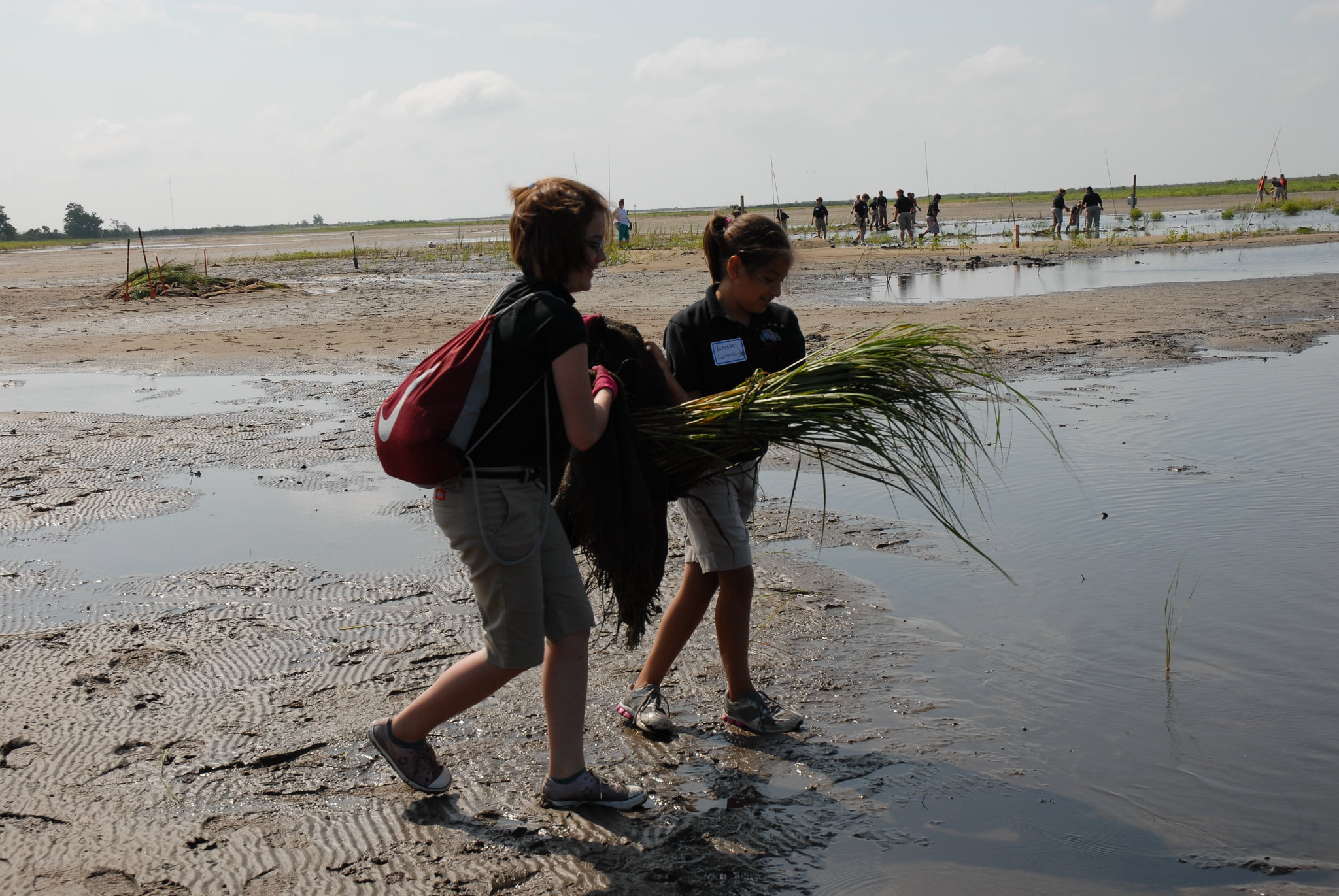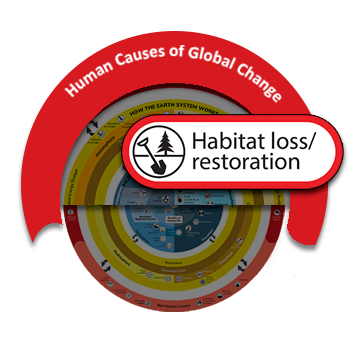Habitat loss refers to the reduction in the amount of space where a particular species, or group of species can survive and reproduce. Habitat loss is a consequence of human activities such as agriculture, urbanization, deforestation, resource extraction, alteration of the sea-floor due to trawling (fishing), or the release of pollutants. Habitat loss can also occur due to environmental changes, such as volcanic eruptions or tsunamis, or changes in climate or sea level, which today are largely the result of human activities. Habitat loss can decrease biodiversity and alters species ranges and interactions.
Humans have altered Earth’s land for thousands of years, but industrialization and population growth over the last 300 years, and especially over the last 70 years, has led to a great expansion in our land use and disturbance of habitats worldwide.
Habitat restoration is the purposeful rehabilitation of an area to recreate a functioning ecosystem. Successful habitat restoration requires understanding species life cycles and interactions, and the food, water, nutrients, space, and shelter that is necessary to sustain species populations. When habitats cannot be restored to their original size or condition, land can be set aside that connects open spaces and habitats, called wildlife corridors, that allow species to survive in and around areas occupied by humans. For example, marshes are important resting spots for migratory birds, bridges allow animals to cross highways, and protected creek habitats create space for plants and animals even within developed areas.

Students planting native grasses to restore a wetland in Louisiana. Credit: Louisiana GOHSEP via Flickr
Habitat loss and restoration impact the Earth system in a variety of ways, including:
- Species populations, ranges, biodiversity, and the interactions of organisms. Habitat loss can fragment ecosystems and can cause species extinctions, while habitat restoration can increase local biodiversity and species populations.
- The evolution of life cycles and traits that help species survive and reproduce in distrubed or altered ecosystems. For example, some bird species living in urban environments have altered their beak shape to be able to more effectively eat the seeds in human-made bird feeders.
- Alter soil quality. Habitat loss, especially removal of plants and trees which stabilize soil, increases erosion, and reduces the nutrient levels in terrestrial ecosystems. This, in turn, can decrease agricultural productivity. In turn, increasing erosion decreases water quality by increasing sediment and pollutants in rivers and streams.
- How much and how fast water cycles through the biosphere and atmosphere. Trees and plants return a significant proportion of precipitation to the atmosphere via a process called transpiration. Thus, loss of plant productivity and biomass decreases the amount of water cycling through the biosphere and atmosphere, while increasing plant productivity and biomass increase the amount of water cycling.
- Impact how coastal regions will be affected by sea level rise. Marshes and swamps protect coastlines by reducing coastal erosion and by promoting sedimentation. These habitats increase the resilience of coastal regions to sea level rise, especially storm surges.
Can you think of additional cause and effect relationships between habitat loss and restoration and other parts of the Earth system?
Visit the agricultural activities, deforestation and reforestation, and urbanization pages to learn more about how processes and phenomena related to land use affect global climate and ecosystems.
Investigate
Learn more in these real-world examples, and challenge yourself to construct a model that explains the Earth system relationships.
